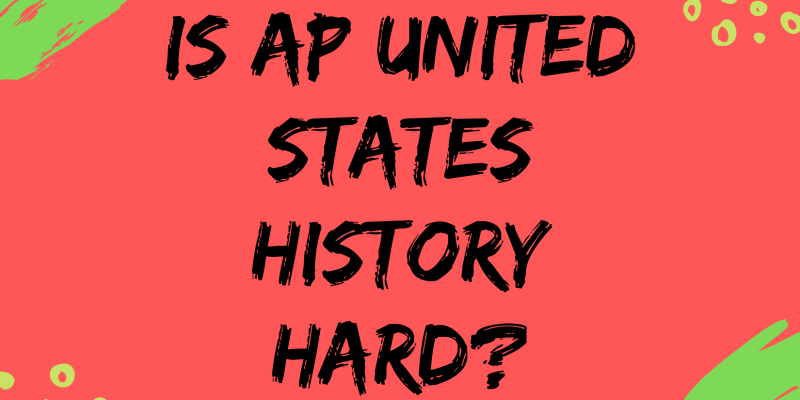
Covering more than 500 years of history, AP® United States History is a notoriously difficult course, culminating in an especially challenging exam.
Only between 10 and 12 percent of students who take the exam every year earn a five, meaning the APUSH exam is a test with one of the least friendly score distributions compared to other APs.
| Scores in 2019 | 5 | 4 | 3 | 2 | 1 |
| Ap® US History | 11.8% | 18.4% | 23.4% | 22% | 24.3% |
The four distinct portions of the test make success dependent on more than just knowledge of content. There is
- a document-based question
- long answer questions
- multiple-choice questions
- an essay
How to study for APUSH; no cramming allowed.
Because the curriculum covers so much material, it’s almost impossible to study successfully for the test in a short period of time. Try all you want, cramming will be near impossible. Even if a student could commit all of the content to memory by studying very intensely right before the test, scoring well requires critical thinking, concise writing, and strong argumentation, all skills which take time and practice to implement effectively. Longer periods of preparation are key to bolstering a student’s confidence on the day of the test, a factor which can greatly affect how well the student performs on the exam.
What is on the AP United States History Exam?
The curriculum is separated into nine key topics:
- American and National Identity
- Migration and Settlement
- Politics and Power
- Work
- Exchange and Trade
- Technology
- America in the World
- Geography and the Environment
- Culture and Society
In addition to reviewing each period on its own to understand the chronology in total, I found it extremely helpful to review each theme separately from beginning to end.
The essay especially is more thematically-based, so being able to make connections between historical events, their causes, and their effects is a great way to showcase a comprehensive understanding of broader ideas that traverse different periods.
What students fear the most on the AP US Exam
After talking to a few of our SoFlo students in the process of doing some final preparation for the exam, a common concern is not being able to recall the specifics of topics covered at the beginning of the year. This, of course, makes sense since the later periods have been introduced much more recently and are fresher in students’ minds. Studying by topic instead of by period can help make reviewing earlier material less stressful since temporarily forgotten facts and figures would be studied alongside more familiar material.
History repeats itself
For students who have learned American history from elementary school onward and have had the opportunity to visit American cultural sites on school field trips, a base of historical knowledge means familiarity with significant names, dates, and major events. To have memories and experiences associated with a particular historical site or topic makes memorizing information more effortless and natural.
However, this can be mimicked by watching documentaries or historically-based fiction movies or reading historically-based fiction books. In addition, current events are more completely understood when one is familiar with their historical causes or precedents; keeping up with current events is another great way to subtly strengthen your understanding of concepts that are part of America’s past.
I noticed, during the period in which I was studying for the AP US History exam, that I was able to understand and contextualize much more of what was currently happening by having a strong grasp of what has happened before. Undoubtedly, additional sources lead to understanding the chronology of American history becoming much more natural and intuitive and can also make studying seem less monotonous and unenjoyable.
The structure of the APUSH exam
Almost as important as the content of the exam is its structure. On my first practice exam months before the real test, I was nowhere near reaching a 5 despite knowing a sufficient amount of information to earn the grade. Where I lost most of my points was in the minutia of the grading criteria, particularly the Document-Based Question. Graded out of seven points, the DBQ has a long list of requirements:
- six of the documents should be analyzed in a student’s response
- a strong thesis statement that does more than restate the prompt
- the use of outside information and knowledge to further contextualize the student’s argument
- drawing connections between documents
- explaining the authors’ points of view.
It’s equally important to remember these logistical requirements as it is to be comfortable with the subject matter, as failing in either aspect will result in lost points. The DBQ is the hard part of the APUSH exam.
The US History Subject Test
At the end of my junior year, having already taken the AP exam and finished the course, I decided to take the June SAT subject test (SAT II) for US History while the information was fresh in my mind. While I had earned a 5 on the AP test and felt comfortable with all of the material covered, the SAT subject test was still difficult for me. The AP test, although it requires some knowledge of specific acts, authors, and figures, was much more general and focused on broader concepts than the subject test. This is largely because the DBQ, Long Answer Questions, and essay portion allow students, to include knowledge they do possess while skirting around topics that they are less familiar with. Of course, the multiple-choice section still requires specificity to recall names and dates so understanding only big-picture ideas is not sufficient to do well on the APUSH exam. However, while the multiple-choice makes up only 40% of the AP exam, an SAT II score is entirely dependent on how many multiple-choice questions out of the 90 on the exam one answers correctly.
Overall, yes, the APUSH exam is difficult. However, knowledge of United States history is extremely useful as the subject is referenced quite often. In addition, the course is a great way for students to gather a general understanding of the chronology of the last five centuries which could also be useful in future courses, especially those on the subject of history or government. While the road to the exam is sometimes grueling and no amount of studying can completely alleviate the anxiety of sitting down to take the exam, having a strong grasp on American history is extremely useful for anyone. With enough preparation and dedication, success is not out of reach!
About the Author: Cleary Waldo was an AP Scholar with distinction and scored a 5 on the APUSH Exam. Now she studies at Georgetown University’s Walsh School of Foreign Service and longs for the days when DBQs were her most challenging assignments.
Check out or newest post: Is AP® English Language Hard?









